In 2016, as the Army was transitioning away from counterinsurgency and focusing its efforts toward strategic competition, the commander of US military forces in the Pacific issued a clear challenge that would drastically change the way the Army would prepare for a fight in a maritime environment. In that year’s annual Association of the United States Army LANPAC conference, Admiral Harry Harris stated that he needed the Army to be able to do four things to be relevant in a future fight in the Pacific. The Army must be able to “sink ships, neutralize satellites, shoot down missiles, and deny the enemy the ability to command and control its forces.” At the time, the Army possessed the capability to perform three of those tasks. But it had been nearly seven decades, since the days of coast artillery, that the Army had given serious thought to the concept of sinking ships.
At the time of Admiral Harris’s remarks, the Army had just completed a large-scale combat operations gap study to determine the modernization priorities for the operational force. In parallel, the Army was refining its concept for multidomain battle and developing a new prototype formation designed to accelerate transformation by putting multidomain concepts into action. General Charles Flynn, today the commander of US Army Pacific, was the Army’s deputy commander for the region at the time and was sitting in the audience during Admiral Harris’s speech. He described it as a combatant commander “putting the gauntlet down” for the Army’s transformation efforts in the region.
With the help of the Philippine government and the Armed Forces of the Philippines, the Army’s 1st Multi-Domain Task Force’s (1MDTF) recently deployed the Mid-Range Capability (MRC) system into the northern Luzon area of the Philippines, demonstrating that Admiral Harris’s challenge served as an effective accelerant for these concepts, organizations, and capabilities. With this capability forward in the first island chain, the Army can now support the joint force and treaty allies in a way that it could not in 2016: it can kill ships. This photo essay chronicles key milestones in the development of this capability and its employment into the Indo-Pacific.
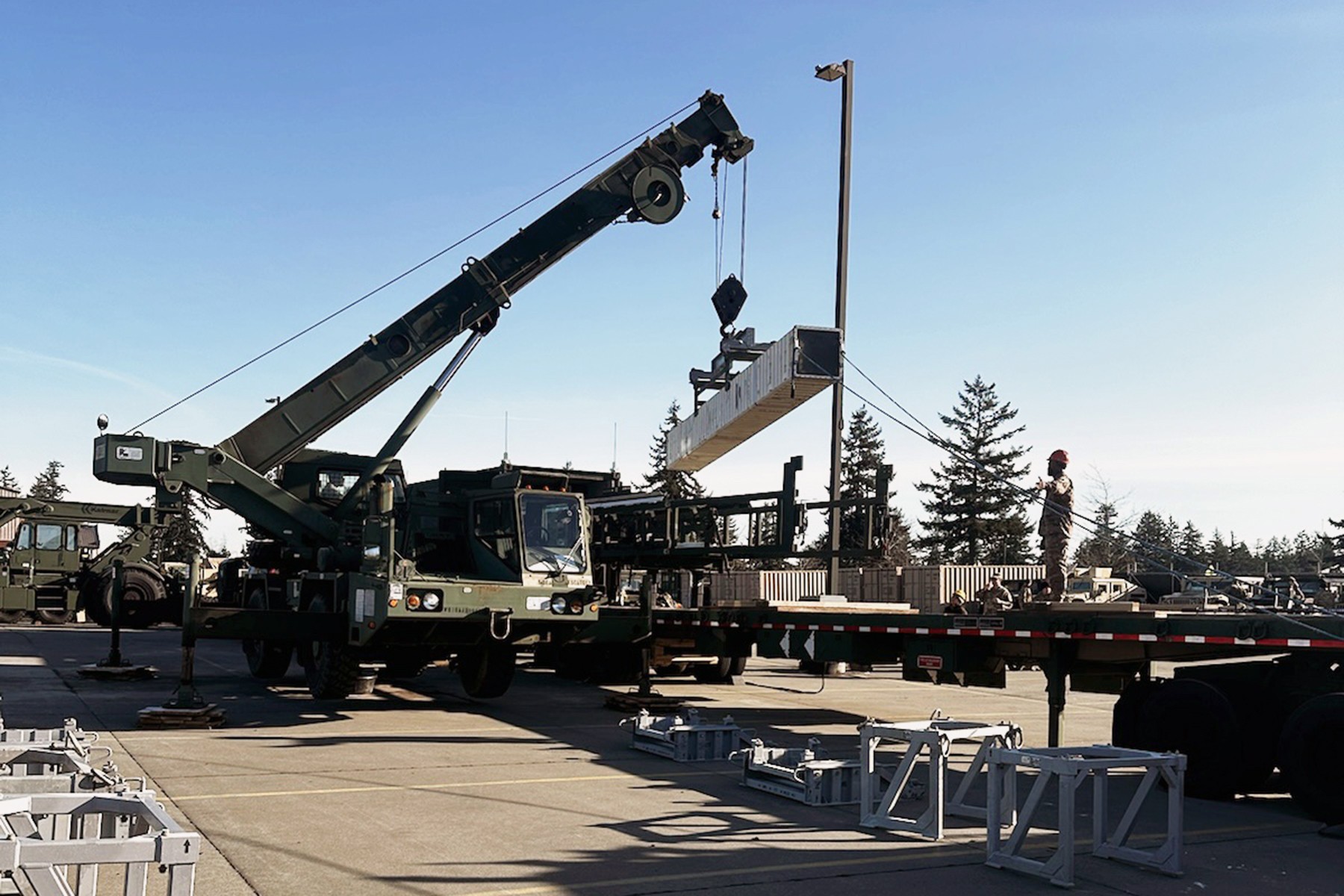
In December 2022, the Army’s Rapid Capabilities and Critical Technologies Office, another new organization in the Army, successfully delivered the first battery of MRC launchers to 1MDTF at Joint Base Lewis-McChord (JBLM), Washington. Ahead of the delivery of the system, soldiers of the Long Range Fires Battalion’s Charlie Battery organized and conducted the necessary individual training and certification to begin section-level training as soon as the systems arrived. The rapid development and fielding of the capability was the result of a collaborative effort between soldiers and sailors throughout the MRC program with critical soldier participation in each phase of the development, training, and testing of the MRC to provide continuous feedback.
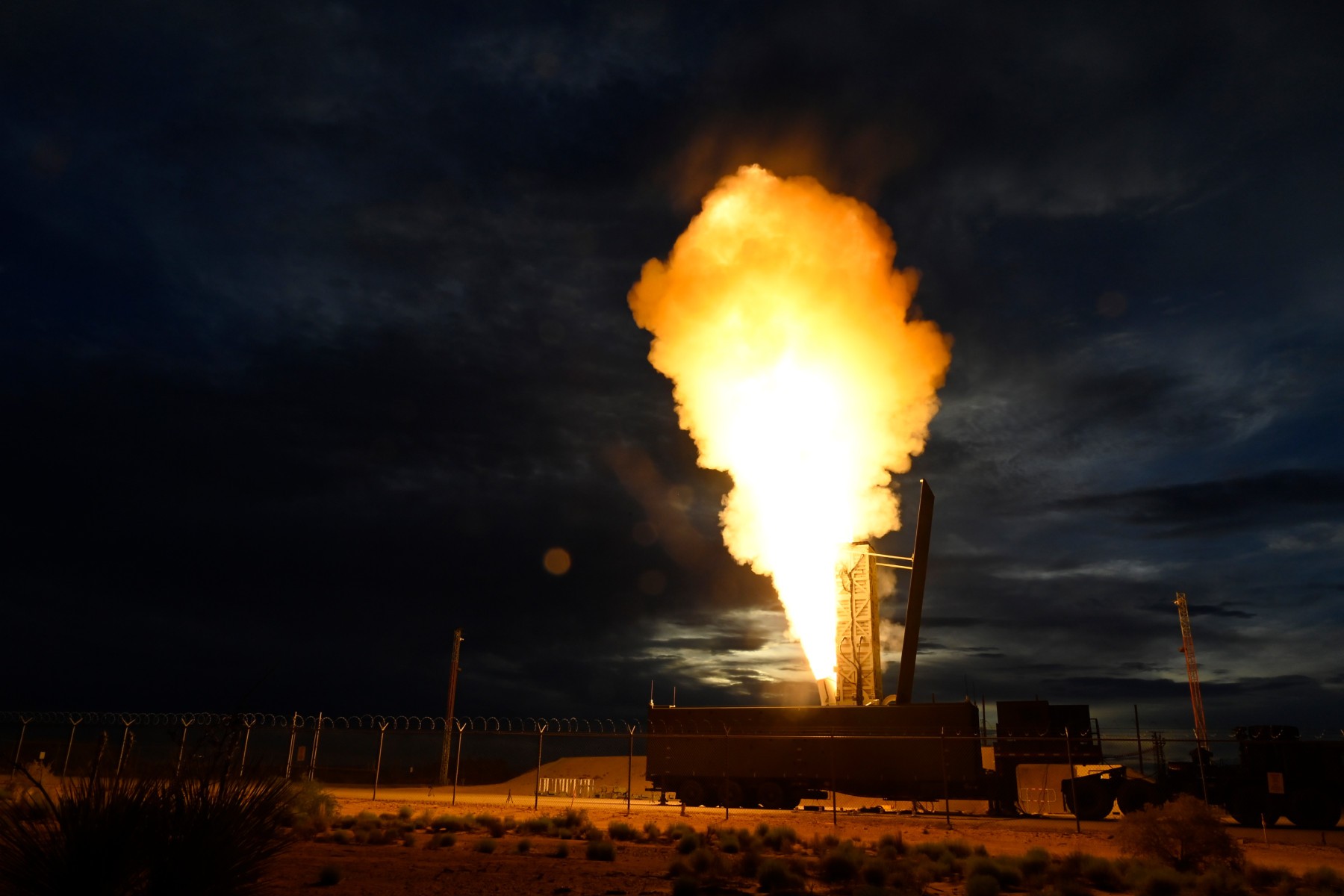
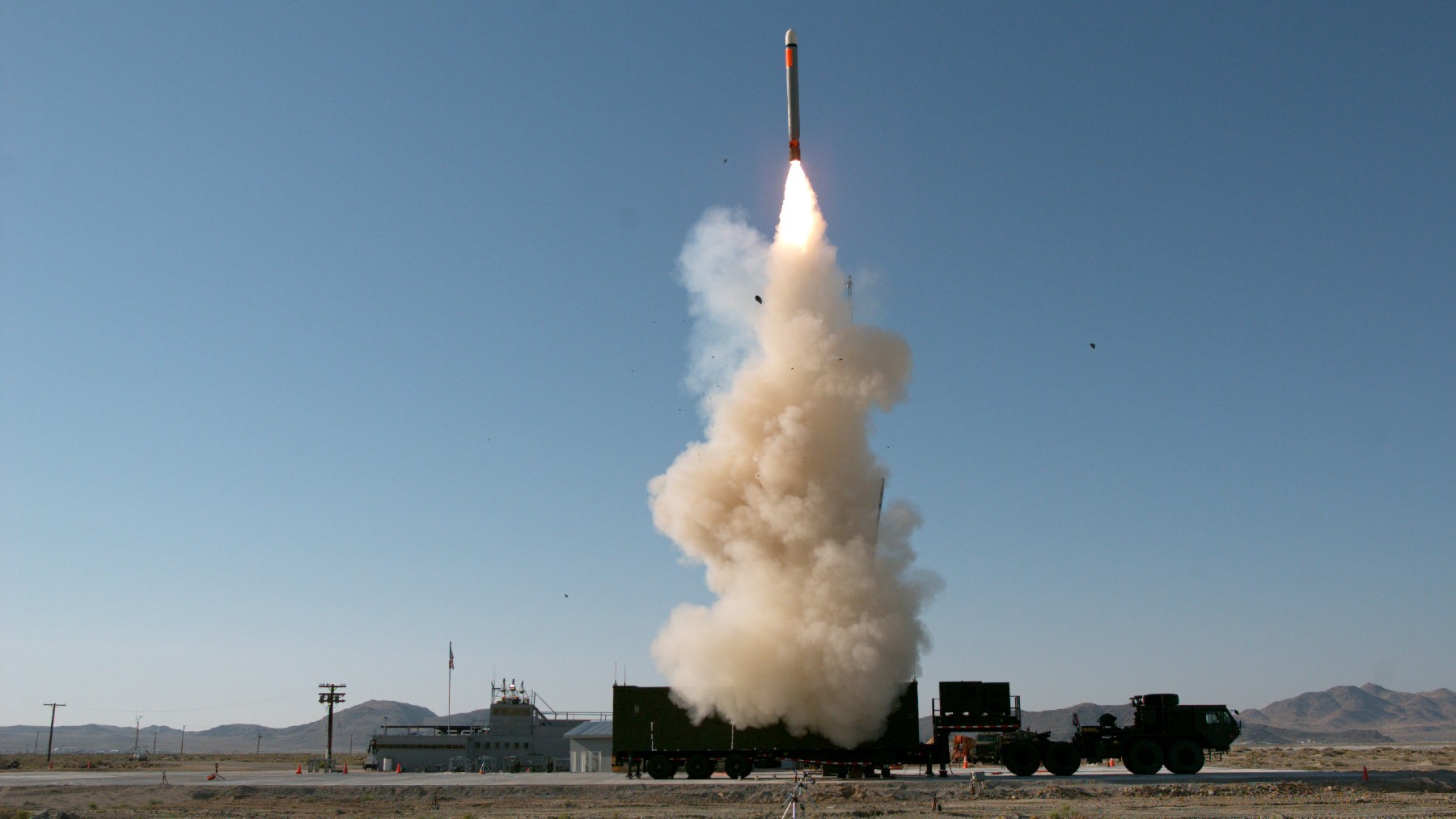
Between May and June of 2023, barely weeks out of new equipment fielding and training, Charlie Battery soldiers conducted the first Standard Missile 6 (SM-6) shot for the Army at White Sands Missile Range, New Mexico (top), followed by the first Tomahawk Land Attack Missile shot at Naval Air Weapons Station China Lake, California (bottom). SM-6 brings the Army the capability to engage moving maritime targets today with future Tomahawk variants enhancing this maritime strike capability.
In her opening address at the 2023 Association of the United States Army annual meeting on October 9, the secretary of the Army, the Honorable Christine Wormuth, highlighted the MRC battery’s ability to strike ships from land as a prime example of the incredible progress on prototyping, production, and fielding the Army had made over the previous year. Secretary Wormuth previously predicted that fiscal year 2023 would be “the year of long-range precision fires.” Not only was the fielding of the MRC to an operational unit a remarkable achievement for the Army acquisition community, she explained, but the MRC, along with dozens of other systems introduced that year, provided the Army the “capability to respond to various threats and serve as a credible deterrent to our adversaries.” The Rapid Capabilities and Critical Technologies Office subsequently completed full delivery of “residual combat capability” with the delivery of live SM-6 and Tomahawk munitions at JBLM. The Army would then go on to field a second MRC battery at JBLM in early 2024.
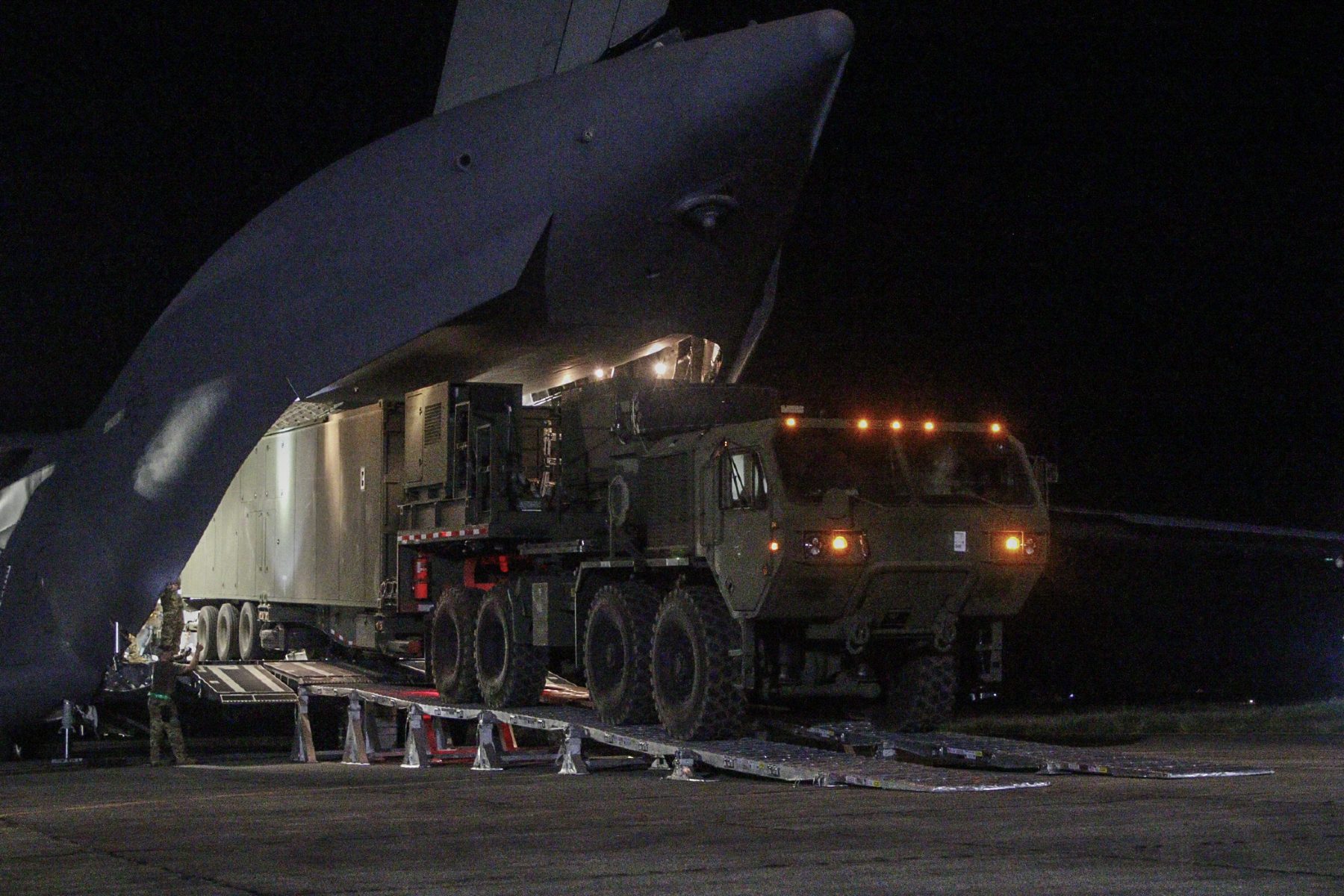
On April 11, 2024, the collective efforts of Charlie Battery and supporting agencies across the Philippine government, Armed Forces of the Philippines, joint force, and Army modernization enterprise culminated in the historic delivery of the MRC missile system to northern Luzon. The system was transported over fifteen thousand miles aboard a C-17 Globemaster III airframe as part of US Army Pacific’s Operation Pathways and combined exercise Salaknib 24. The deployment, undertaken in part with the pilots and flight crew of the US Air Force’s 62nd Airlift Wing from JBLM, showcased the extensive reach and logistical precision of the joint and combined force in the first island chain. Moreover, the deployment demonstrated the Army’s ability to answer the initial call to action as another arrow in the Indo-Pacific commander’s quiver of capabilities to counter threats in the maritime domain.
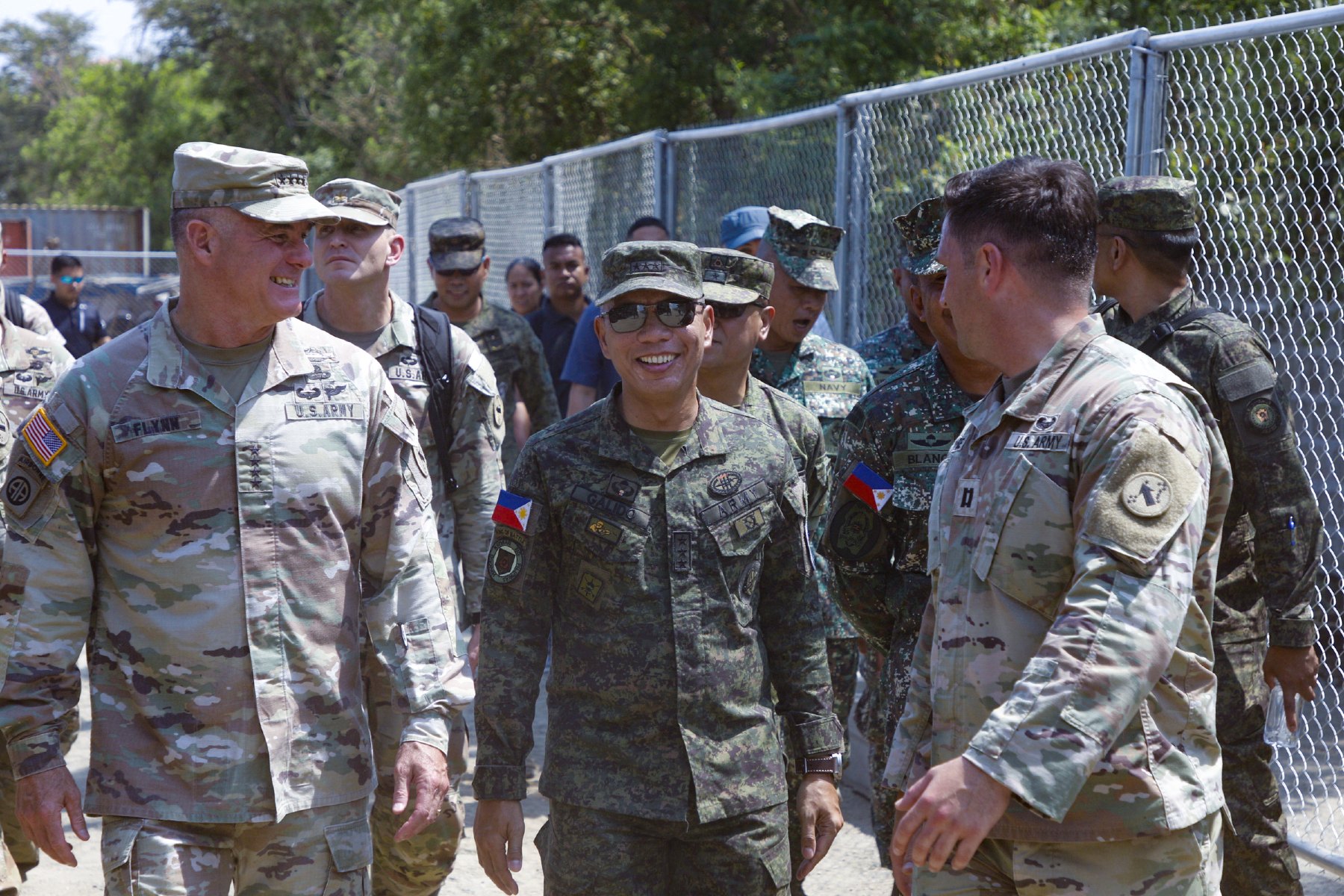
On April 28, 2024, Philippine Army Lieutenant General Roy M. Galido, commanding general of the Philippine Army, and General Flynn visited the MRC site, where the commander of Charlie Battery (MRC), 5-3 Field Artillery (Long Range Fires Battalion), 1MDTF provided an overview of training in preparation for joint and combined exercise Balikatan 24. Balikatan is an annual exercise between the Armed Forces of the Philippines and the US military designed to strengthen bilateral interoperability, capabilities, trust, and cooperation built over decades of shared experiences.
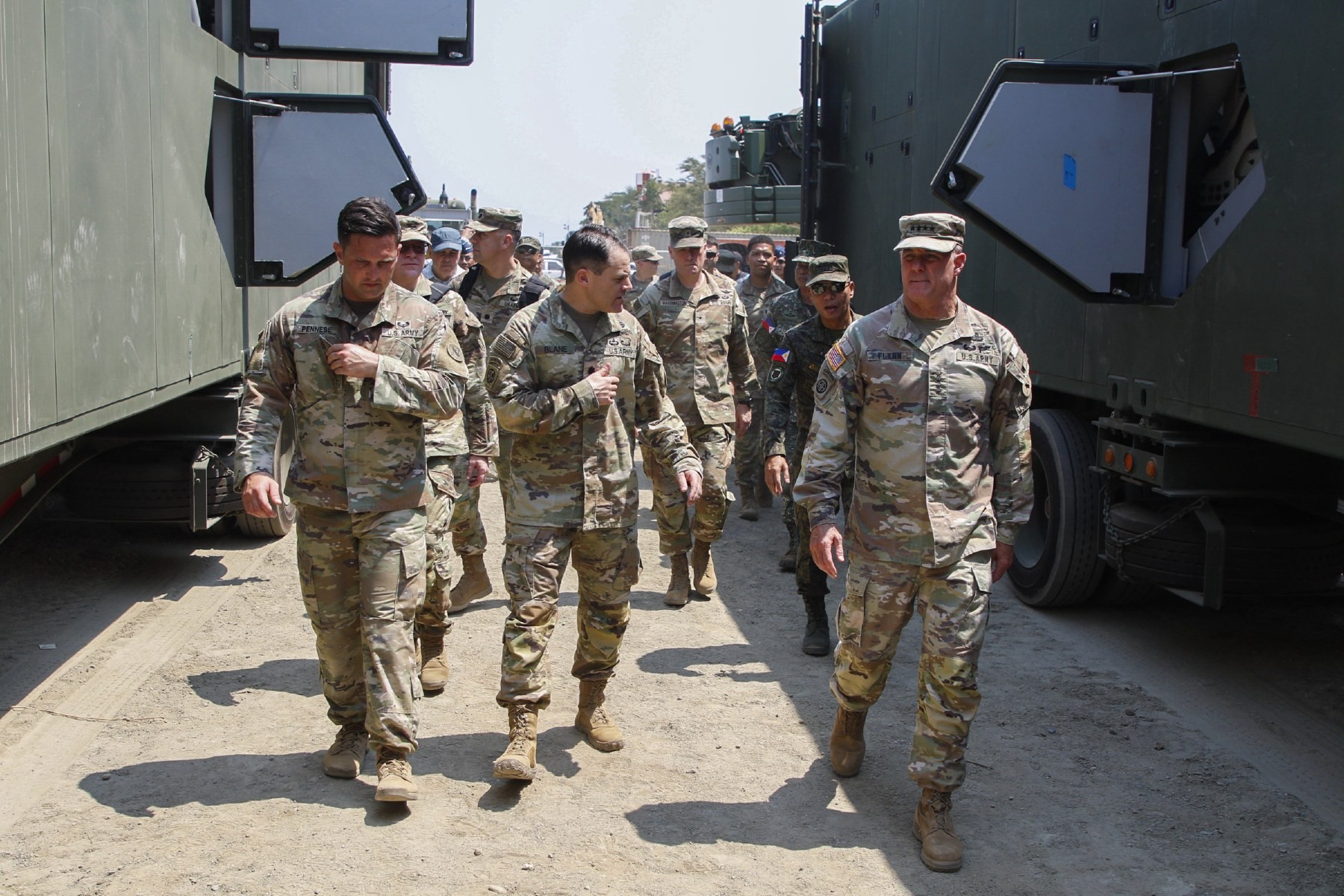
During their visit to the MRC site, General Flynn and Lieutenant General Galido were shown the MRC launchers and provided with an overview of the ongoing training, which includes section certification and digital rehearsals with Pacific Fleet assets in the region. Although this training began on JBLM, this was the first time the battery has conducted training in the hot, humid, and corrosive environment of the Philippines with its higher headquarters and partnered forces distributed hundreds of miles away. The lessons from this training were shared in near-real time to improve future iterations of the system as the Army fields equipment for subsequent MRC batteries.
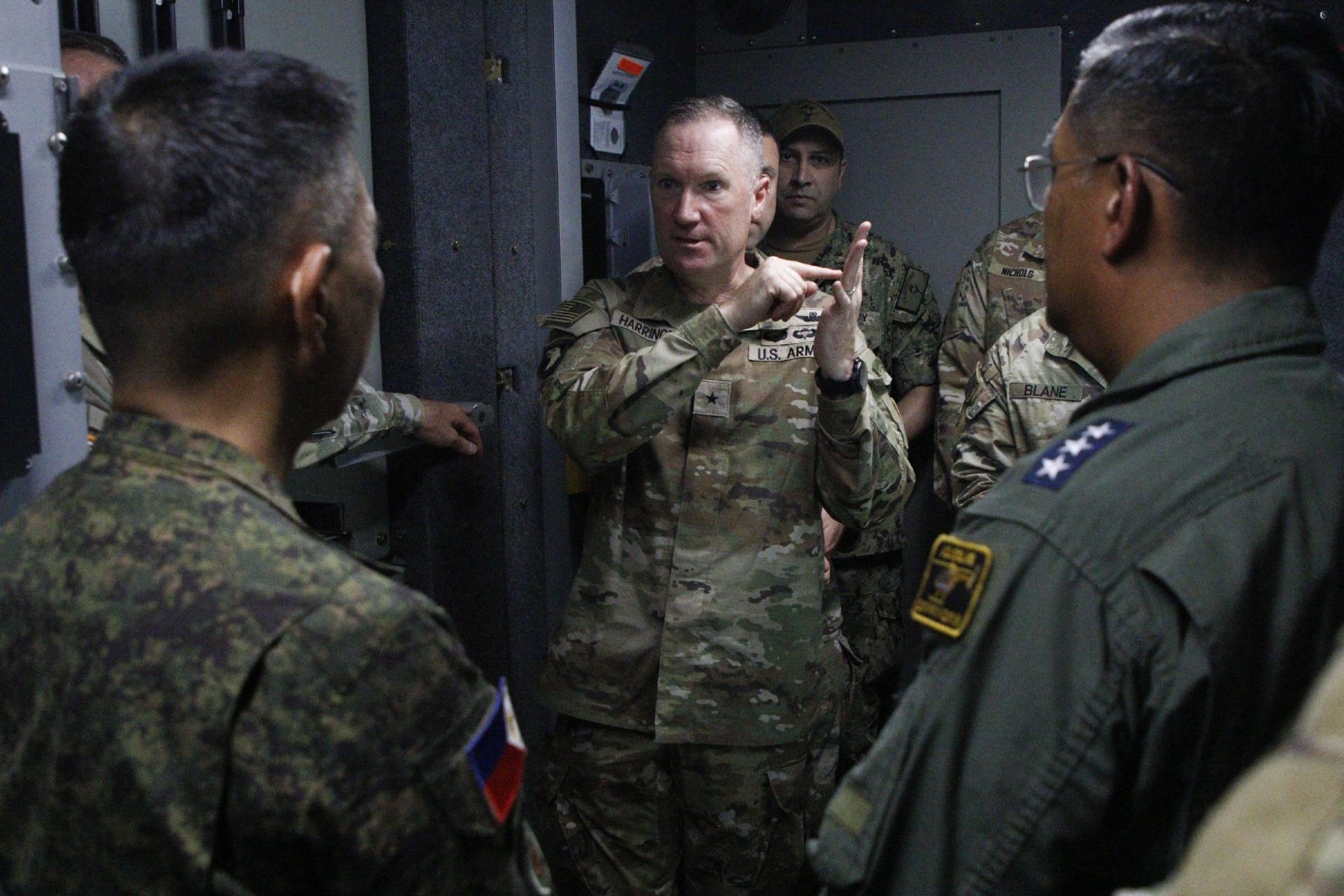
Philippines senior military leaders—Lieutenant General Galido and Philippine Air Force Lieutenant General Fernyl Buca, commander of the Armed Forces of the Philippines’ Northern Luzon Command—also visited the battery operations center, where they were briefed on MRC training and operations by Brigadier General Bernard Harrington, commander of 1MDTF, who also explained the unique capability the MRC, as a rotational asset, provides to a joint and combined force. Amid increasingly violent engagements against Philippine vessels in the country’s own territorial waters, the US Army has introduced a system that can hold at risk potential adversaries that threaten territorial sovereignty.
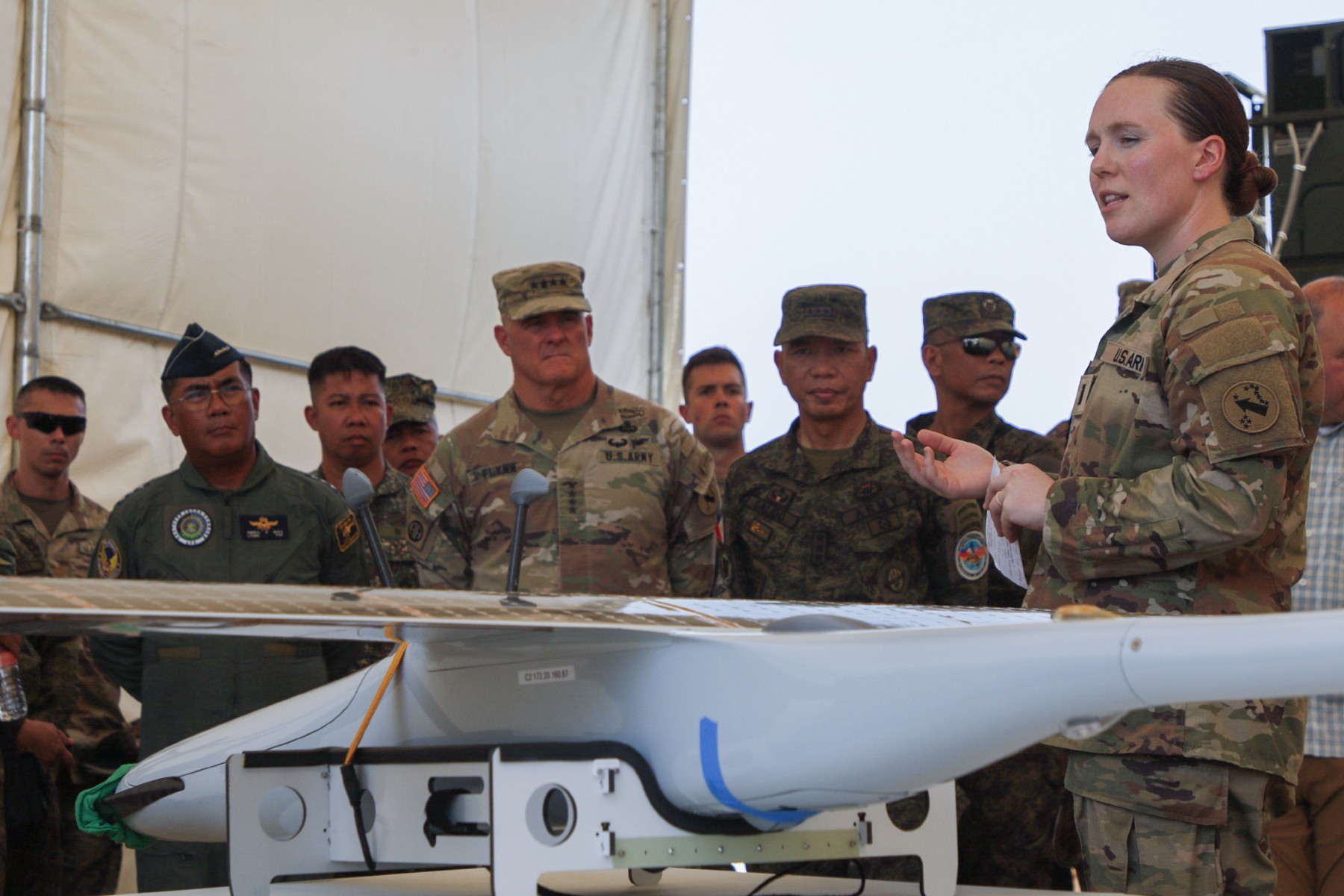
While visiting the MRC site, an officer assigned to the Extended Range Sensing and Effects (ERSE) company, 1st Multi-Domain Effects Battalion, 1MDTF briefed Lieutenant General Buca, General Flynn, and Lieutenant General Galido on a solar uncrewed aerial vehicle. As the Army increases the ranges of its shooters, it must also increase its ability to sense more persistently and at greater ranges. Since 2022, the ERSE company has been experimenting with a variety of high-altitude and long-endurance capabilities within the annual Balikatan exercise. These systems, launched from the land, complement and integrate with other space, aerial, and terrestrial collection efforts, a foundational component to the formation of interior lines for the joint force.
The ERSE company continued this experimentation in Balikatan 24 with flights in the Luzon Strait and West Philippine Sea further enhancing combined capacity for maritime domain awareness as well as contributing to the joint force’s ability to sense and make sense of the operating environment. Throughout Balikatan 24, US forces increased combined capacity by training alongside Philippine allies and other participating forces to integrate communications, sensing, and targeting systems throughout the scenario.
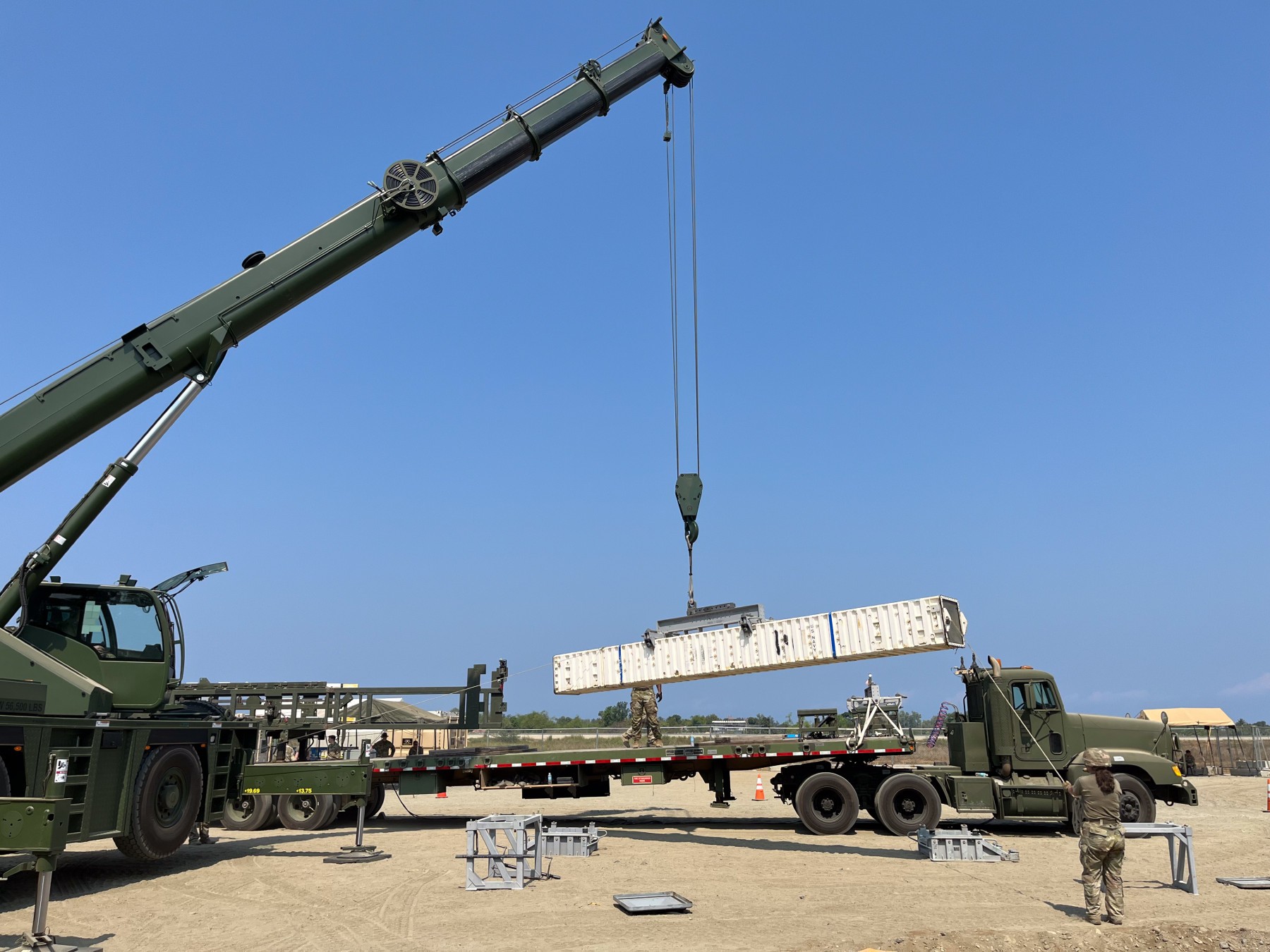
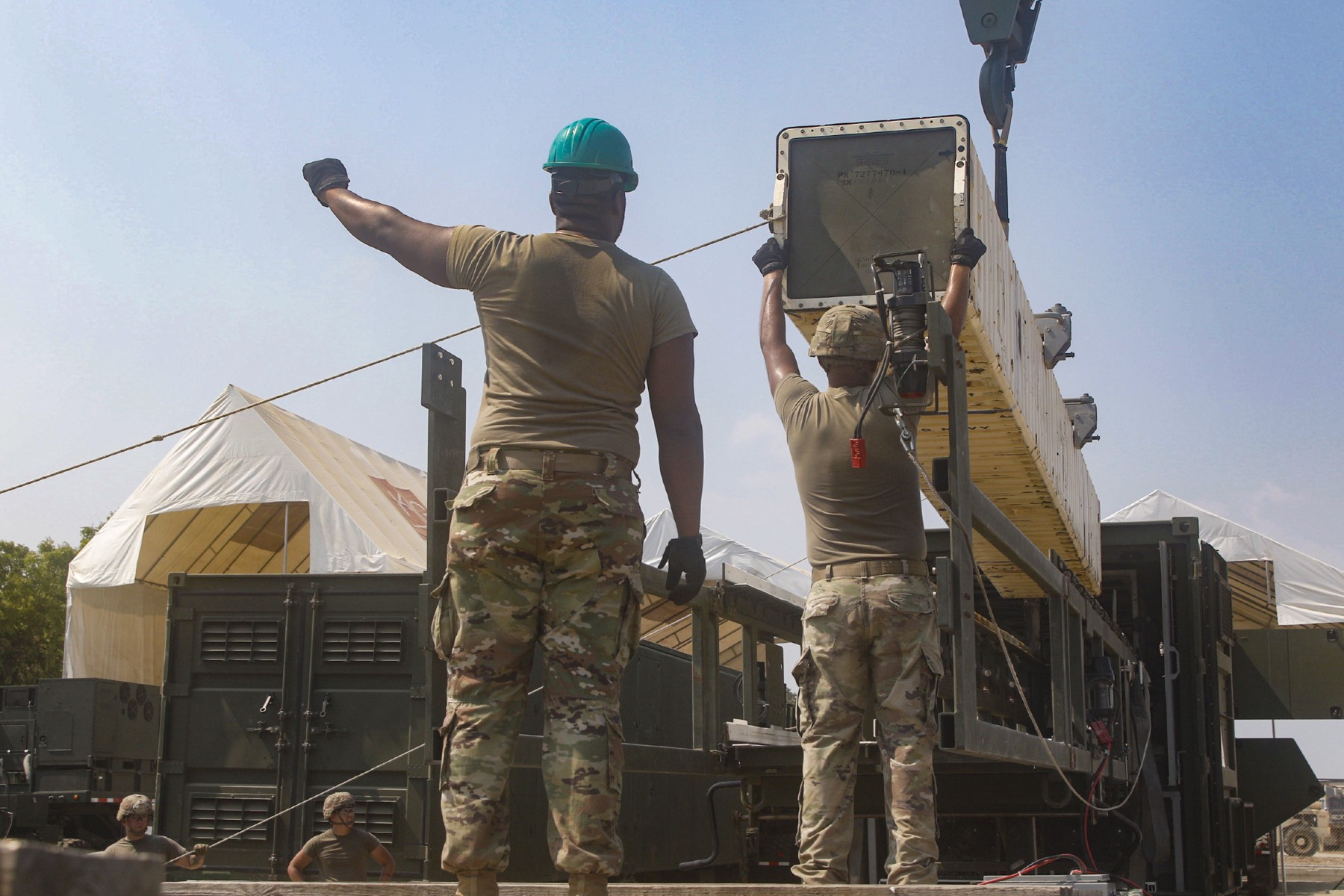
Charlie Battery training in northern Luzon also included ammunition handling and reloading as part of its certification. Movement of these critical munitions over the land in this environment is a task the joint force had not previously undertaken and helps inform and improve logistical capabilities, another foundational component of joint interior lines.
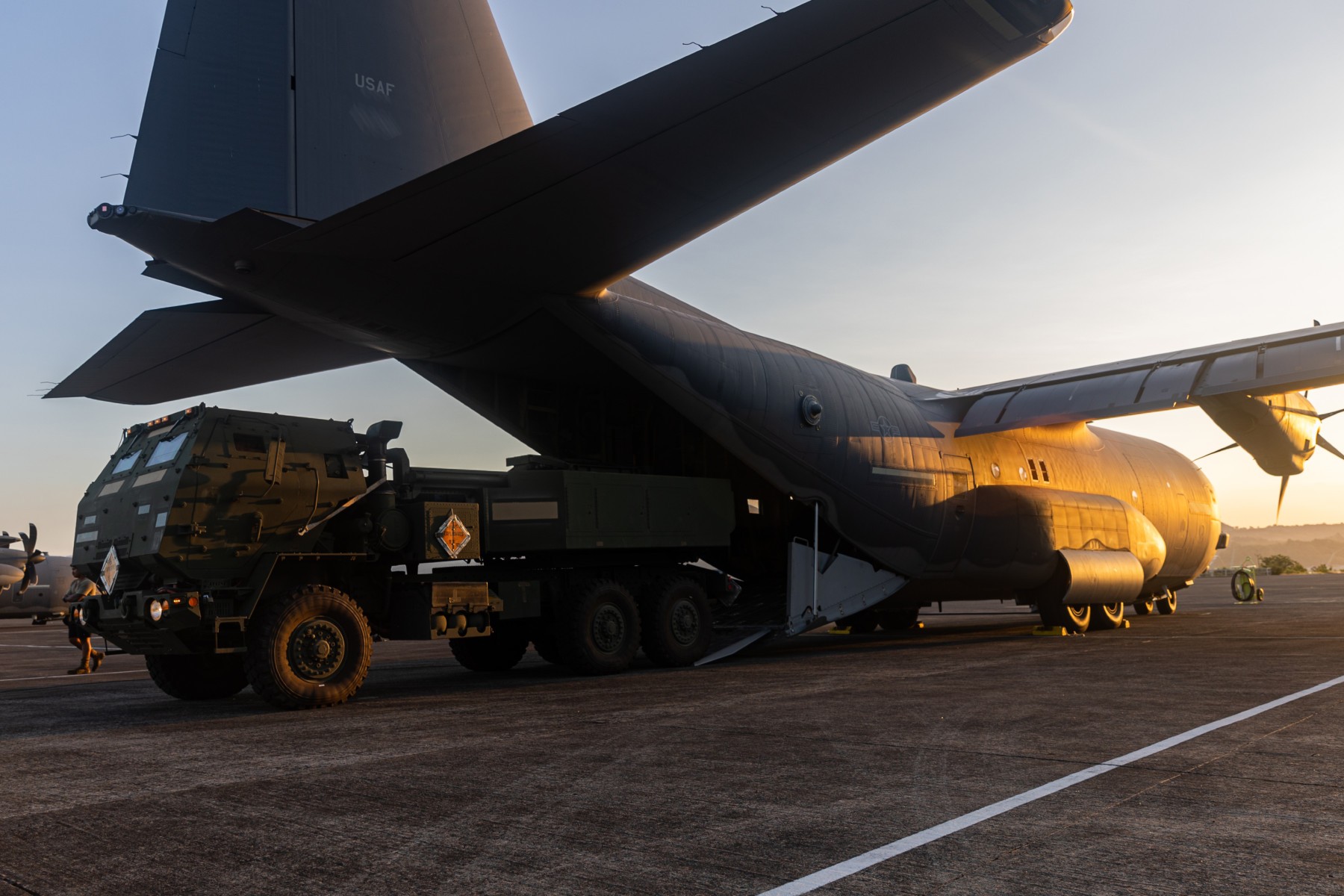
Elsewhere on Luzon, US soldiers under Alpha Battery, 5-3 Field Artillery, 1MDTF and airmen with 1st Special Operations Squadron conducted a High Mobility Artillery Rocket System (HIMARS) Rapid Air Insertion, better known as HIRAIN, from Subic Bay International Airport into San Vicente Airport on the island of Palawan.
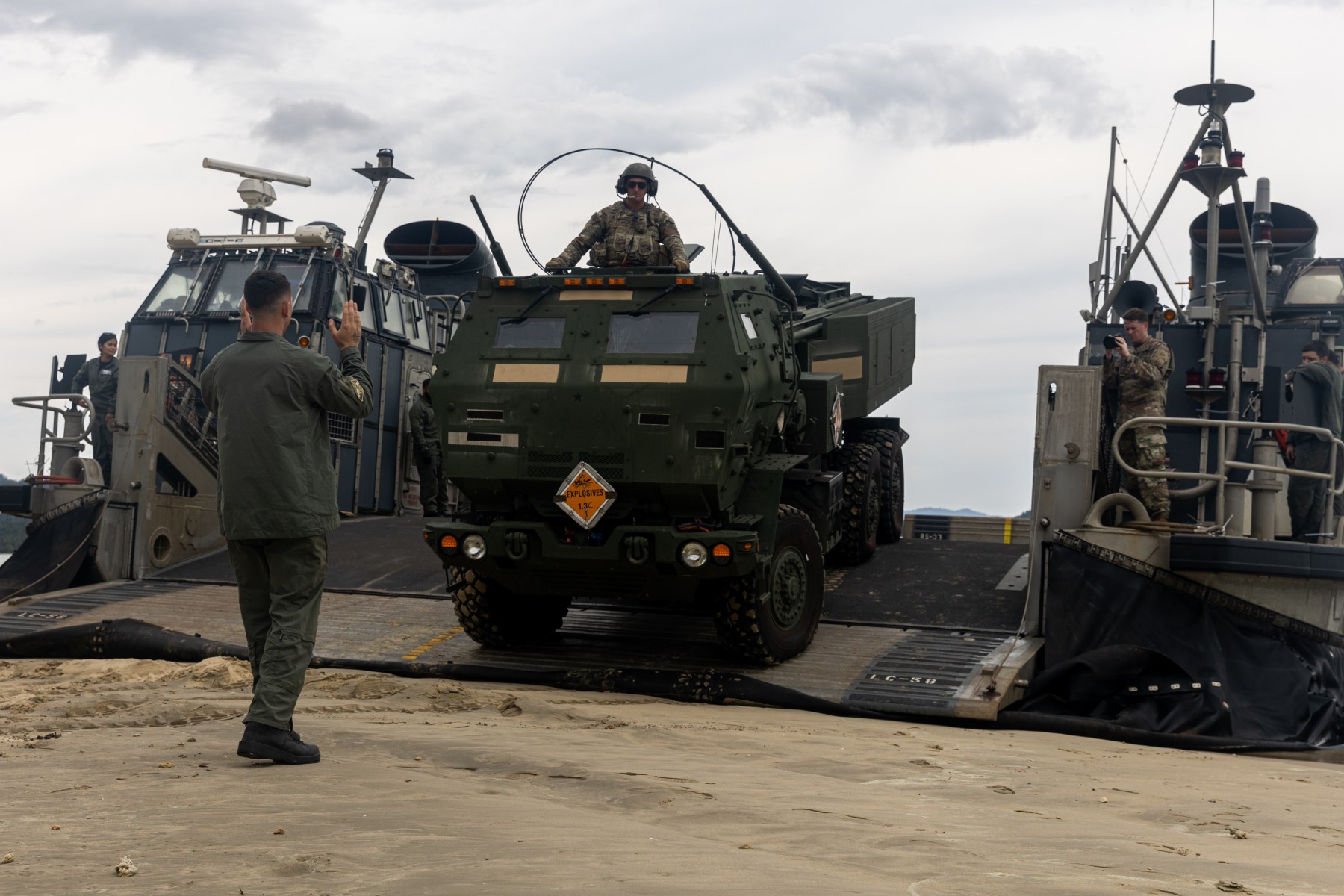
Alpha Battery soldiers with sailors and Marines assigned to Amphibious Craft Unit 5 continued movement to southern Palawan aboard US Navy Landing Craft, Air Cushion 8 to participate in a joint and combined littoral live-fire event. The beaches were secured by US and Armed Forces of the Philippines special operations forces ahead of each landing. The movement of the HIMARS launchers represents a dynamic deployment of assets to complement other postured and rotational systems on the islands.
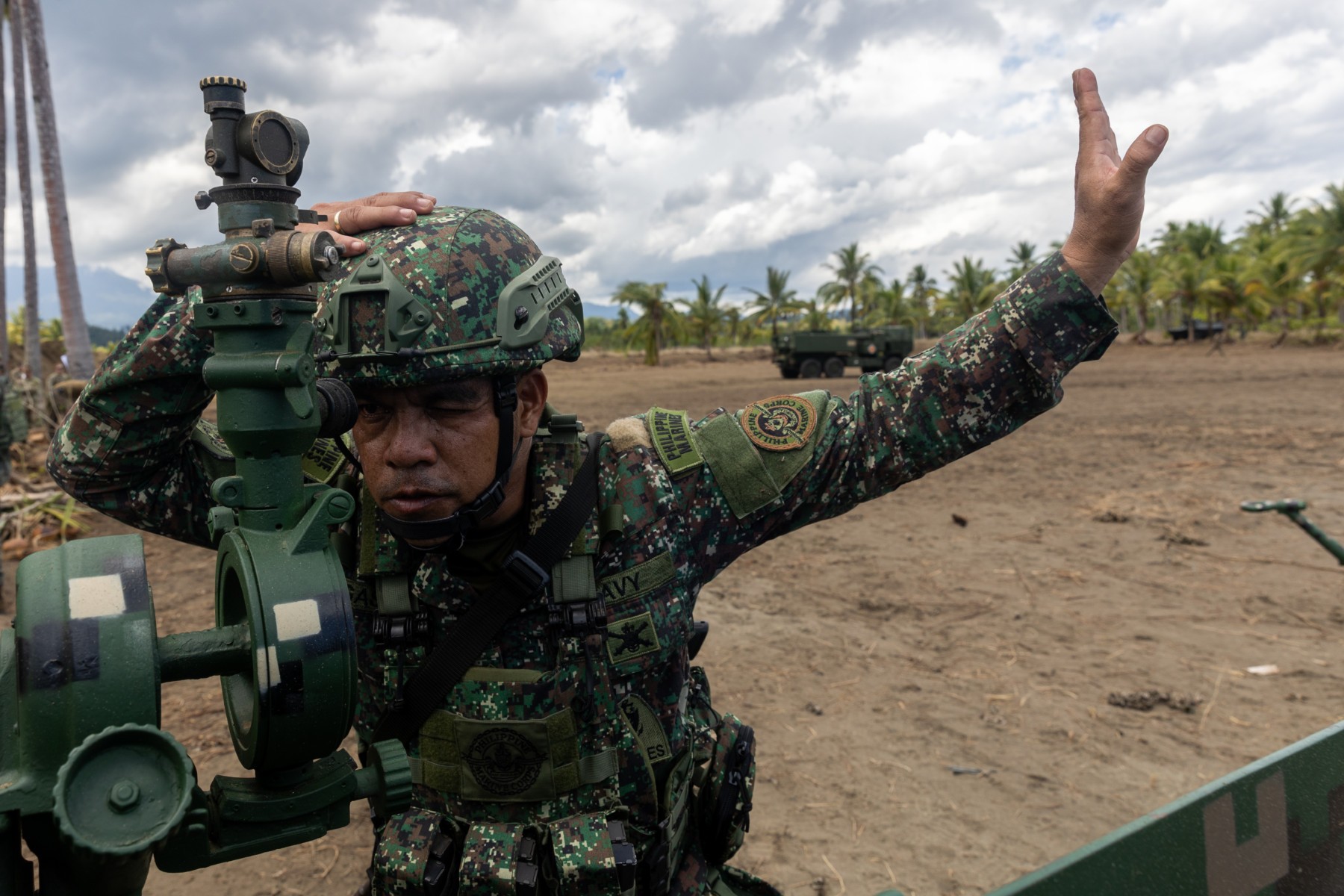
Philippine Marine M101 105-millimeter howitzers and US Army M142 HIMARS launchers occupied firing positions on the beach in Rizal, Palawan during dry-fire rehearsals ahead of live-fire execution. The shoulder-to-shoulder positioning of these weapon systems, alongside other direct-fire systems, with varying range of munitions challenges previous concepts of how forces will be arrayed for the close and deep fight in a multidomain environment.
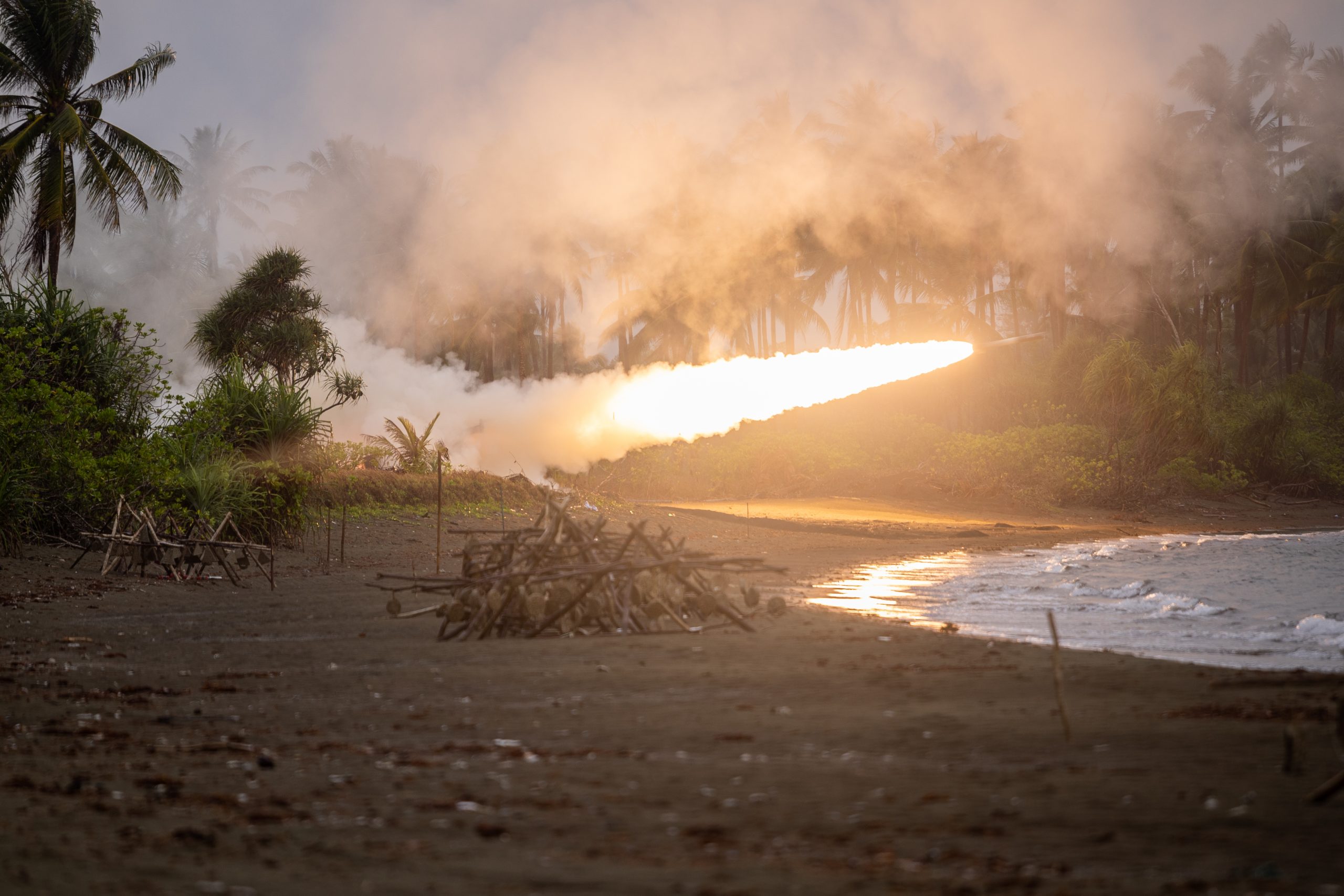
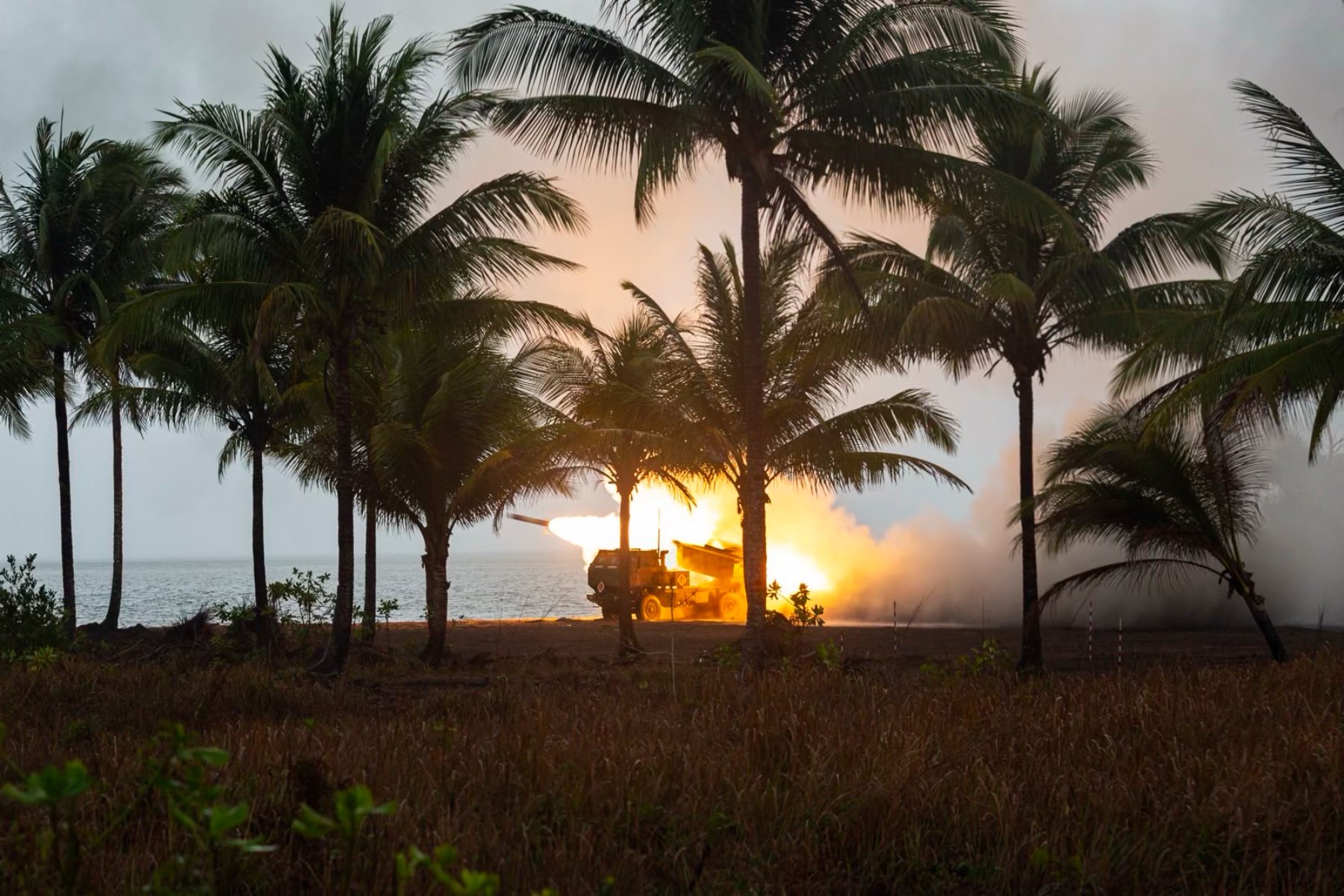
During the joint and combined live-fire event, multiple Alpha Battery HIMARS launchers, receiving data from a US Marine Corps sensor through 1MDTF’s all-domain operations center in downtown Manila, emerged from hide sites within the jungle to deliver the first rounds from firing points along the beach against a maritime target thousands of kilometers away. This was followed by a barrage of cannon and direct-fire weapon systems from other Philippine and US partners engaging multiple maritime targets. The entire live-fire event was conducted within Philippine territorial waters and represents a complex territorial defense against an adversary advancing with multiple maritime destroyers and landing crafts. Ahead of the introduction of the future Precision Strike Missile with maritime targeting capability for the HIMARS, these rehearsals help develop the human, technical, and procedural interoperability critical to the successful execution of these live-fire events.
Coast Artillery Reimagined
The ability of the MRC to strike a maritime target today and HIMARS maritime-strike technology of the future, paired with the organic deep sensing of the ERSE company, are complementary capabilities that enable the Army to answer Admiral Harris’s call to action: to be relevant in the future fight in the Indo-Pacific region, the Army needed to be able to sink ships. The collective deployment of these systems and formations during Operation Pathways is a testament to the sense of urgency behind the Army’s transformation as well as the all-domain interdependencies of the joint force that come together on the land through the creation of joint interior lines. These new systems and formations will later participate in Joint Pacific Multinational Readiness Center (JPMRC) training, another signature effort for US Army Pacific, which enhances the training with a free-thinking adversary and overarching scenario within an already challenging operational environment. Forward deployment of combat-credible forces through Operation Pathways, creation of enduring interior lines for the joint force, and the addition of complexity to training through JPMRC: this is transformation in contact for the Army in the Indo-Pacific.
Lieutenant Colonel Ben Blane is a field artillery officer and commands the Army’s first long-range fires battalion as part of the 1st Multi-Domain Task Force at Joint Base Lewis-McChord, Washington. He holds an undergraduate degree from the United States Military Academy and graduate degrees from Columbia University and John Jay College.
Captain Ryan DeBooy is the public affairs officer for the 1st Multi-Domain Task Force at Joint Base Lewis-McChord, Washington. He holds undergraduate and graduate degrees from Middle Tennessee State University and is a recipient of an Emmy Award from the Michigan chapter of the National Academy of Television Arts & Sciences.
The views expressed are those of the authors and do not reflect the official position of the United States Military Academy, Department of the Army, or Department of Defense.

All these so called Joint Fires exercises are only Relevant. Against a Ignorant of losses enemy. Who expects long range precision fires to be utilized and exploited to their utmost against them. Soviet and current Russian losses in Black Sea Fleet are a Prime Example of having perfect air defense weaponry on land and sea. Yet not having a combined concerted C5ISR-T protocol to implement these defensive nodes? The loss of the Moskva a Cold War Era Slava class cruiser with Navalized S-300 Strategic SAM is a perfect example. Having failed to successfully intercept Pathetic tomahawk cruise missiles over Syria? The futility of deployment of this vessel type? For C3 operations in the Black Sea Fleet or anywhere else should have been Settled Law? Way too much credit is given to paltry ukrainian forces in sinking obsolescent Russian vessels in Black Sea. Russian Failure to deploy Ka-31 Helix AEW helos with Rangefinder Illuminator radars for Terminal Illumination of Incoming missiles or drones? This is the main reason for their losses. Ultra Large Undersea Vehicles can provide threat forces a long term, prolonged endurance IRST node that with secure communications or encrypted datalinks, can endable the aggressor. To attain preliminary targeting information to render usa army, usmc land based precision fire complexes mute and untenable. A complacent foe ignorant of losses like Russians are about the only Near Peer foe, who behaves in this fashion. PRC forces see the there are No Benefits derived from this posture.